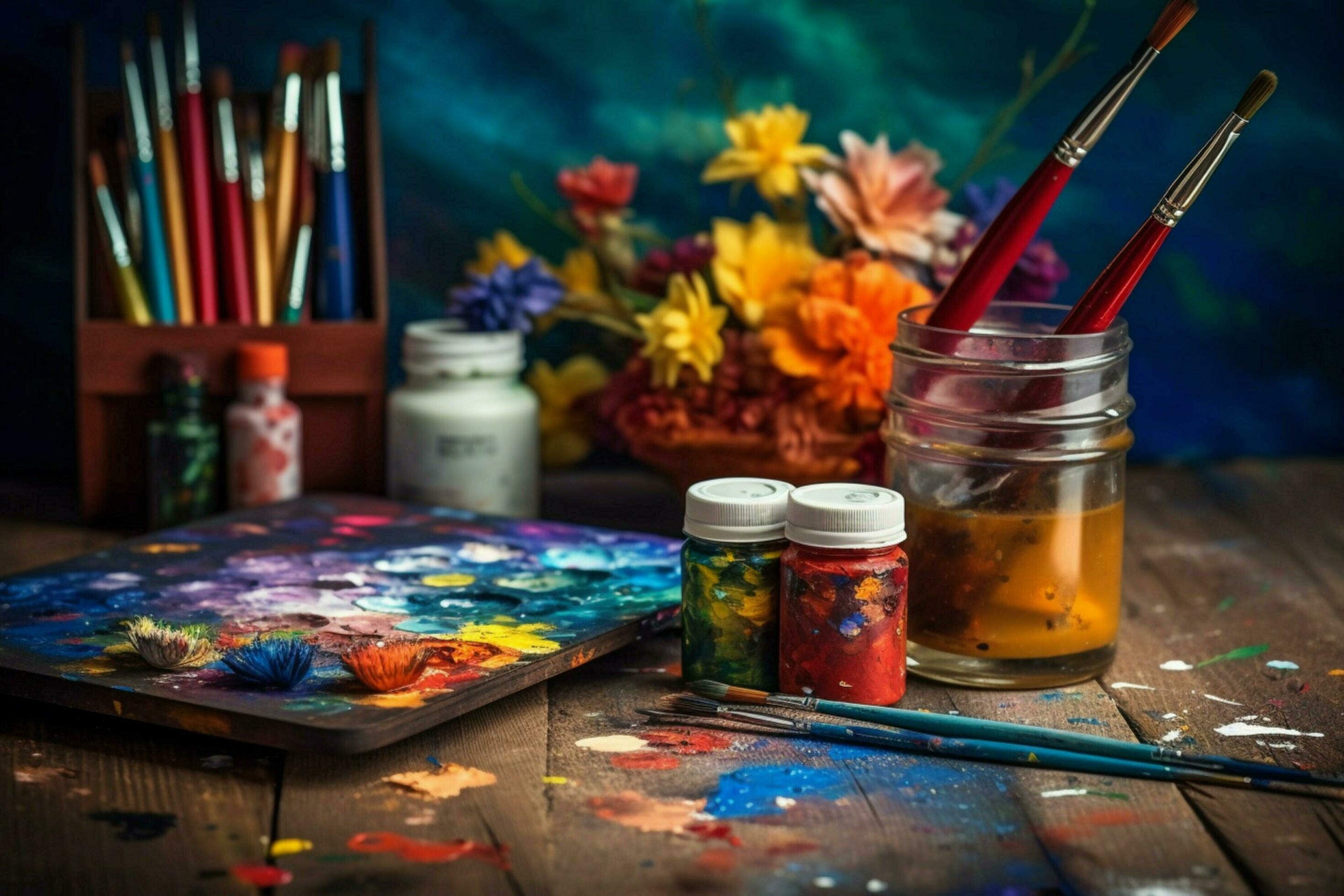Essential Painting Accessories for Every Beginner
No matter if you’re a student beginning your artistic journey or an aspiring artist looking to elevate your skills, having the right painting accessories is essential. The tools you use can make a significant difference in the quality of your work and the enjoyment you get from the creative process. This guide highlights the must-have painting accessories for beginners, carefully curated for both students and those stepping into the world of art.
Paints
Start with a basic set of paints, such as acrylics, watercolors, or oils. Acrylics are particularly versatile and beginner-friendly because they dry quickly and can be easily cleaned with water. As you progress, consider investing in high-quality paints with rich pigmentation, which allow for more vibrant and lasting results.

Brushes
A variety of brushes is essential to learning different strokes and techniques. A starter set that includes a range of sizes and shapes—such as flat, round, and filbert brushes—will help you understand how each brush impacts the application of paint. Over time, you might want to expand your collection to include both synthetic and natural bristle brushes. Synthetics are ideal for smooth applications, while natural bristles work well with thicker paints and for creating texture.
Canvas or Paper
Begin with affordable, high-quality surfaces suited to your chosen medium. Watercolor paper, canvas boards, or canvas pads are excellent for practice. As your skills develop, you may prefer working on stretched canvas or wood panels, which provide a more professional surface and are better suited for larger works or pieces intended for display.
Palette
A simple plastic palette with wells is perfect for mixing colors and experimenting with blending. As you advance, you might opt for a glass or wooden palette, which offers a smooth surface that’s easier to clean and more durable over time.
Easel
While a tabletop easel is not essential, it can be a great addition, providing a better angle for painting and reducing strain on the neck and back. For those working on larger canvases, a sturdy, adjustable floor easel is a must, offering stability and better control over the painting process.
Palette Knives
Palette knives are versatile tools that can be used not just for mixing paint, but also for creating texture on the canvas. Start with a basic metal or plastic palette knife, and as you grow more confident, explore different shapes and sizes. These can be used for applying thick layers of paint, creating unique effects, and even scraping off unwanted sections.

Water Jars and Rags
A water jar for rinsing brushes and a rag for cleaning are necessary to maintain the quality of your brushes and prevent muddy colors. Using multiple water jars—one for initial rinsing and another for final cleaning—can help keep your brushes and paint colors pure.
Gesso
Gesso is a primer used to prepare surfaces for painting, making them more absorbent and ensuring the paint adheres well. Using high-quality gesso that can be sanded for a smoother finish gives you greater control over the final texture of your work.
Varnish
Varnish can protect finished pieces and give them a professional look. It seals and protects your work from dust, UV light, and moisture, preserving the colors and surface integrity over time.
Storage Solutions
Simple storage solutions, such as a toolbox or plastic container, are essential for keeping your supplies organized and accessible. As your collection grows, investing in specialized storage like brush holders, paint organizers, and drying racks will help keep your tools well-maintained and ready for use.
Painting Journey with the Right Essentials
Starting your painting journey with the right accessories can make all the difference in both your learning experience and the quality of your work. These tools provide a foundation for exploration, skill-building, and creative growth. With these essentials, you'll be well-equipped to create your best work, whether in a classroom or a studio.

